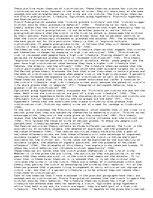-
Victimization Theories
There are five major theories of victimization. These theories discuss how victims and victimization are major focuses in the study of crime. They all share many of the same assumptions and strengths dealing with crime and its victims. The five major theories are Victim precipitation, Lifestyle, Equivalent group hypothesis, Proximity hypothesis, and Routine activities.
Victim Precipitation assumes that "victims provoke criminals" and that "victims trigger criminal acts by their provocative behavior" (106). There are five major theories of victimization. These theories discuss how victims and victimization are major focuses in the study of crime. They all share many of the same assumptions and strengths dealing with crime and its victims. The five major theories are Victim precipitation, Lifestyle, Equivalent group hypothesis, Proximity hypothesis, and Routine activities.
Victim Precipitation assumes that "victims provoke criminals" and that "victims trigger criminal acts by their provocative behavior" (106). According to our text, this theory states that the victim initiates the confrontation that might eventually lead to the crime. In victim precipitation, it can be either passive or active. Active precipitation occurs when the victim is the first to attack or encourages the criminal by their actions. Passive precipitation can either occur due to personal conflict or when the victim unknowingly threatens or provokes the attacker (95). The strengths that the text point out for this particular theory is that it "explains multiple victimizations. There are five major theories of victimization. These theories discuss how victims and victimization are major focuses in the study of crime. They all share many of the same assumptions and strengths dealing with crime and its victims. The five major theories are Victim precipitation, Lifestyle, Equivalent group hypothesis, Proximity hypothesis, and Routine activities.
Victim Precipitation assumes that "victims provoke criminals" and that "victims trigger criminal acts by their provocative behavior" (106). According to our text, this theory states that the victim initiates the confrontation that might eventually lead to the crime. In victim precipitation, it can be either passive or active. Active precipitation occurs when the victim is the first to attack or encourages the criminal by their actions. Passive precipitation can either occur due to personal conflict or when the victim unknowingly threatens or provokes the attacker (95). The strengths that the text point out for this particular theory is that it "explains multiple victimizations. …


